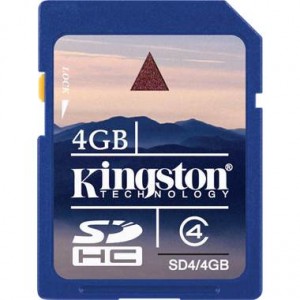Good news to OSPi users: a pre-configured SD card image is now available for download at the following url:
- OSPi SD card image (June 25, 2014)
- SHA1SUM: 1cc26d3271b6dad35f0bc423412981530da5de41
- MD5SUM: cbb0e246f6daf0db68d68c7f0731e78d
NOTE: OSPi v1.4 requires either a microSD card or a low-profile SD card (due to the limited space in the enclosure). A microSD card adapter for RPi is included in the kit.
The image is compressed from an existing OSPi installation that contains Dan’s interval_program, Rich’s sprinklers_pi program, Samer’s OpenSprinkler mobile app, and the Google Calendar-based scheduling program. Download it, burn it to an SD card, and pop it in to your Raspberry Pi. Then you will be ready to go right away. No more pulling your hair or banging your head against the wall (well, hopefully :))!
The process to burn the image to an SD card is the same as burning a raspbian image to SD card. If you’ve used Raspberry Pi before, you’ve probably done this already, maybe even multiple times. If not, you should check the detailed online instructions here: http://elinux.org/RPi_Easy_SD_Card_Setup
Here is a quick summary:
- Decompress the image file to your computer.
- Insert an SD card (4GB or above). Make sure you back up any important file on the SD card as the procedure below will overwrite the content on the SD card.
- Depending on what operating system you use:
- On Windows, use the Win32DiskImager software.
- On Mac, use the ‘dd’ command in a terminal, for example: sudo dd bs=1M if=name_of_the_image_file of=/dev/partition_to_burn_to
- On Linux, the same, use the ‘dd’ command on a terminal, for example: sudo dd bs=1M if=name_of_the_image_file of=/dev/partition_to_burn_to
- VERY VERY IMPORTANT: make sure you have selected the correct drive name (or partition name) to burn the image to!!! If you’ve selected the wrong drive, you might end up wiping out your computer’s hard drive, and I am sure you will be back pulling your hair again!!! Double check before you press enter or click on confirm.
Once the SD card is ready, pop it in to your Raspberry Pi. Since WiFi is not configured yet, you should first connect it directly to your router using a wired Ethernet cable. Alternatively, if you are a Linux user, insert the SD card to your computer, and you directly edit the WiFi SSID and password in file /etc/network/interfaces on the SD card (not your computer!). This way when you pop it in to RPi, it will automatically connect to your WiFi network.
In your home router’s configuration page, find out the IP address assigned to the Raspberry Pi. Next, open a browser, and type in:
http://x.x.x.x
where x.x.x.x is your Raspberry Pi’s IP address. You should see a page with further instructions, such as setting up time zone, WiFi etc. If you can see this page, congratulations, you’ve succeeded!
Dan Kimberling’s interval_program is set as the default program to run on start-up. Type in the following url in a browser:
http://x.x.x.x:8080
(again, x.x.x.x is your Raspberry Pi’s IP address) and you should see the web interface of the interval_program.
The OpenSprinkler mobile app is also pre-installed to the SD card, which is available at:
http://x.x.x.x/sprinklers
You can also switch to run Rich Zimmerman’s sprinklers_pi program on start-up. To do so, ssh (or use a monitor and keyboard) to your Raspberry Pi (the system uses the default user name pi and password raspberry) and run the script in a terminal: sudo /home/pi/select_program. Once you’ve switched to the sprinklers_pi program, you can access its web interface at the same http://x.x.x.x:8080.
These have all been explained in the one-page instruction. For questions, comments, and suggestions, please post them at the Rayshobby Forum: http://rayshobby.net/phpBB3. Thanks!

